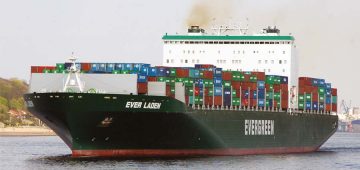The fire on the Grande America is the latest in a spate of worrying fires started by certain materials in containers onboard box ships.The insurance company TT Club estimated that every 60 days in the world at least one fire happens on a large vessel carrying containers. According to the insurer, it’s time to change something in the approach to the transport of potentially dangerous goods.
On 3rd January, a fire broke out in one container on the deck of the Hapag-Lloyd container ship Yantian Express and spread to additional containers.
On 31st January the APL Vancouver suffered a fire in its container cargo while the vessel was on passage from Shekou to Singapore.
On 13th February a fire broke out in three containers onboard the E.R. Kobe. These containers were filled with charcoal. In this instance the crew reacted quickly and brought the fire under control.

One of the main causes of fires on container ships is what is technically know as deliberate indication of incorrect data in the declarations of dangerous goods, in other words making a wrong declaration so that dangerous goods do not look so dangerous. The reason for this practice is simple. If the cargo is considered dangerous, its transportation is much more expensive.
This is a very despicable way of fraudulently trying to save money on the shipper’s behalf and strong efforts should be made to crack down on this and ensure that dangerous goods are declared appropriately so that due safety measures can be taken for their transportation.
I was very saddened to learn of the passing of Hamish Ross, editor of Sea Breezes magazine. Although we were competitors in the market place I had the utmost respect for Hamish and his achievements in the maritime world. He was held in high esteem for his work with Stena Line and later, the Isle of Man Steam Packet Company. I would like to send my condolences to his family at this sad time.
editor@shippingtandy.com





Comments
Sorry, comments are closed for this item